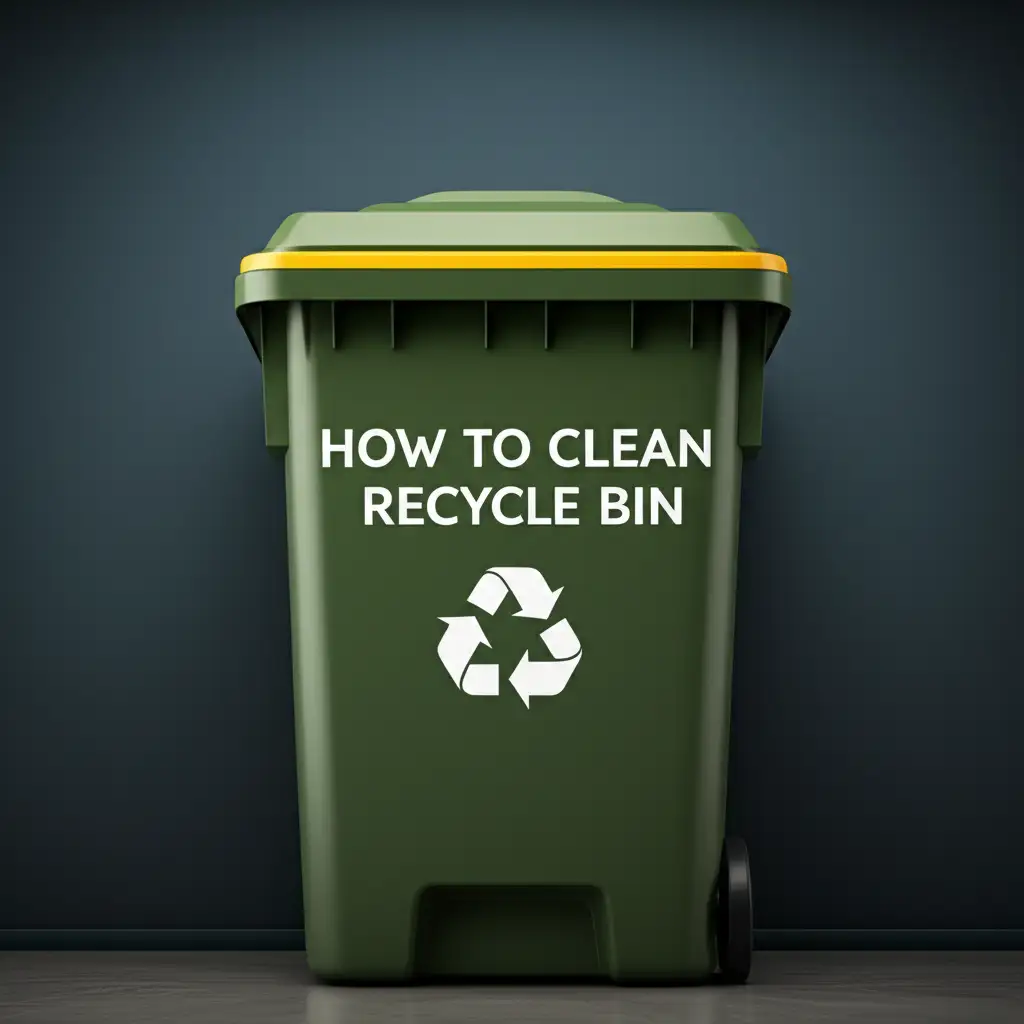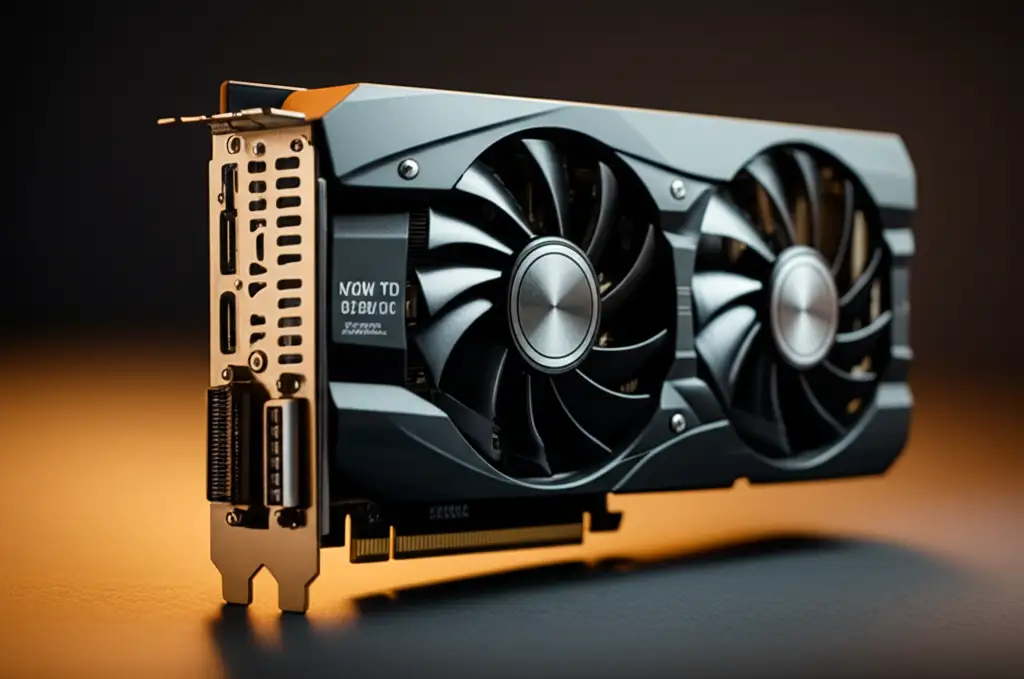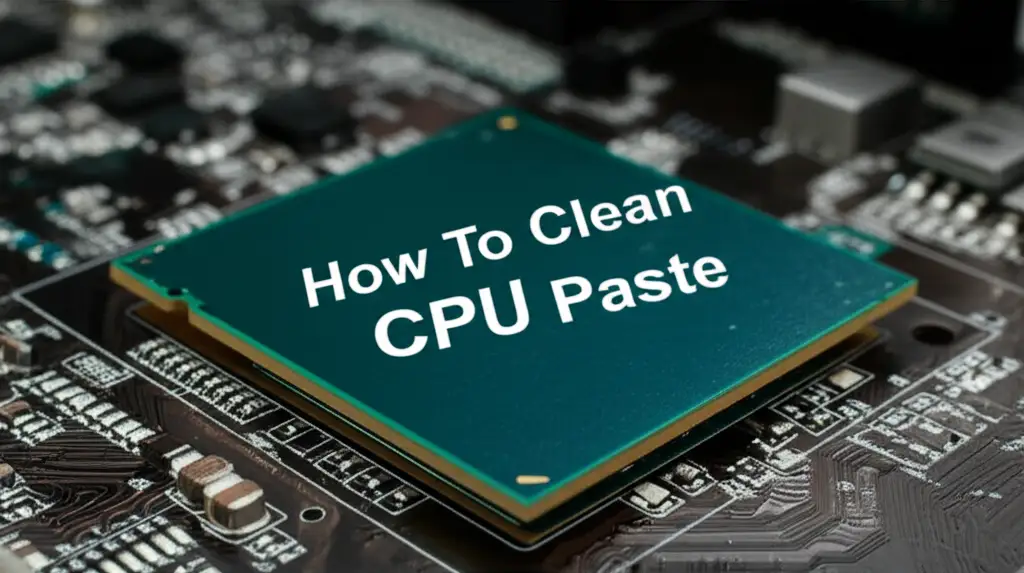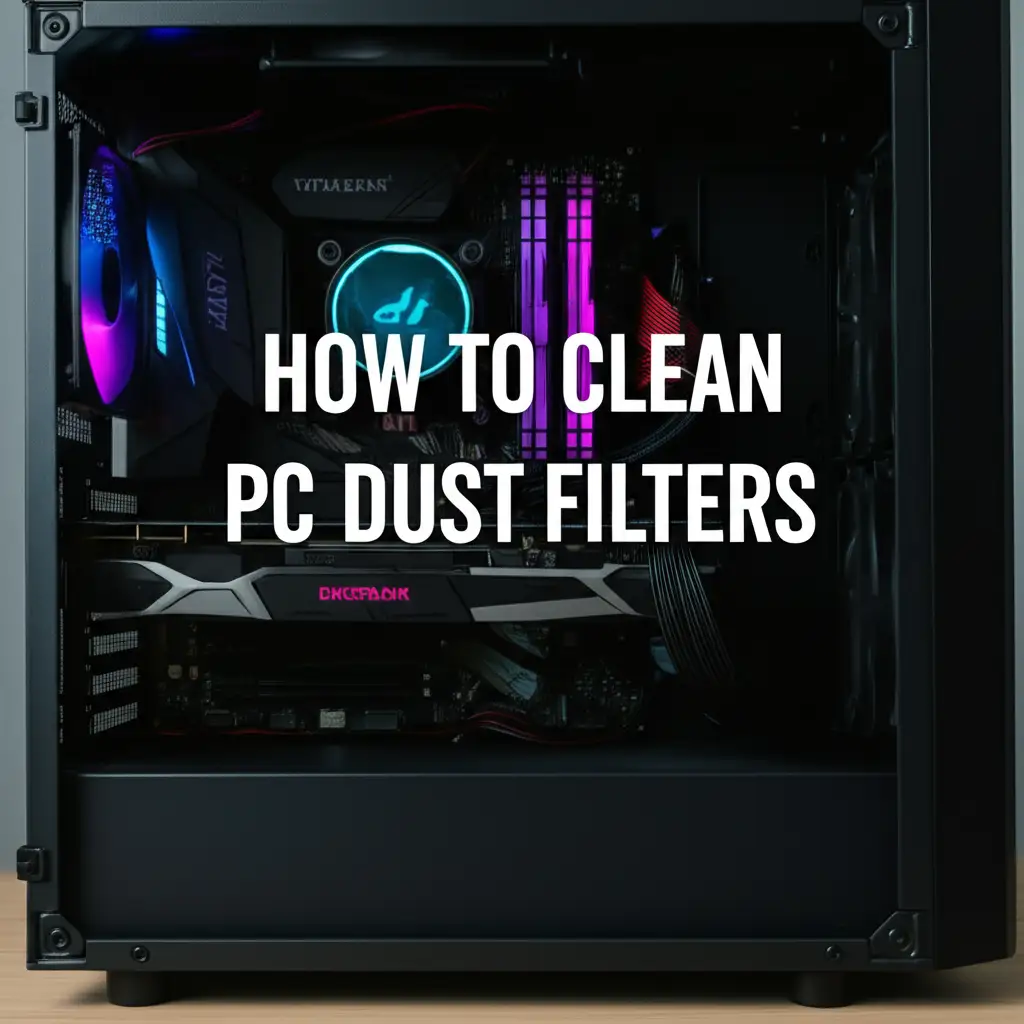· Computer Maintenance · 17 min read
How To Clean Scratch Disk
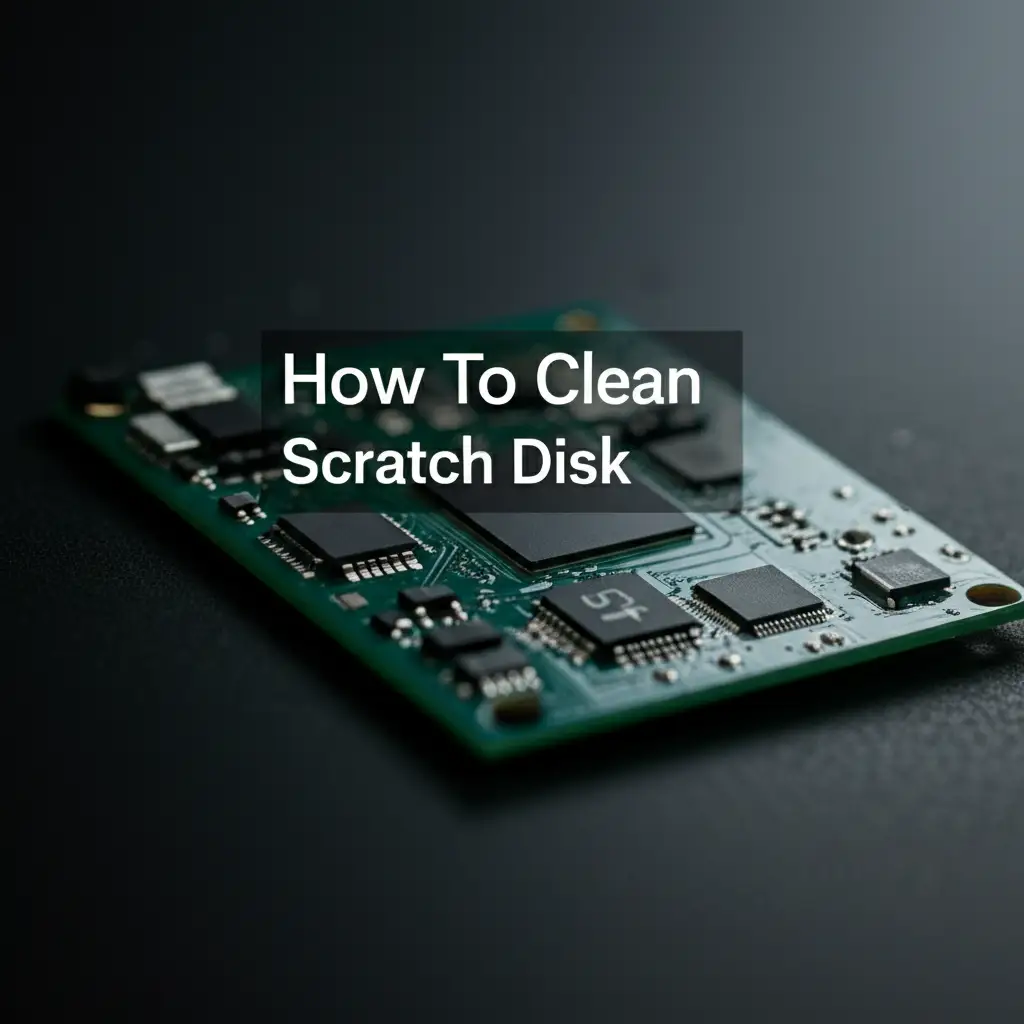
How to Clean Your Scratch Disk for Peak Performance
Have you ever been deep into a creative project, only for your computer to suddenly tell you, “Scratch disk is full”? It is a frustrating moment. This message often appears when using demanding software like Adobe Photoshop, Premiere Pro, or After Effects. Your system performance can slow to a crawl, or applications might even crash.
Understanding and managing your scratch disk is essential for smooth computing. It acts as temporary memory when your computer’s RAM runs out. When this temporary space fills up, your system struggles. This guide will walk you through the precise steps to clean your scratch disk. You will learn how to identify the problem, free up space, and prevent future issues. I will show you how to keep your digital workspace tidy and efficient.
Takeaway
- Understand Scratch Disk: Learn what a scratch disk is and why it fills up, especially with creative software.
- Identify Issues: Recognize the signs of a full scratch disk, like error messages and slow performance.
- Locate Files: Find temporary and cache files on your system that contribute to scratch disk fullness.
- Clean Effectively: Use specific methods for Windows, macOS, and individual applications to remove unwanted data.
- Optimize Settings: Adjust scratch disk preferences in applications to use faster drives.
- Prevent Future Problems: Implement regular maintenance, ensure sufficient RAM, and use SSDs for optimal performance.
To clean a scratch disk, you must delete temporary and cache files generated by demanding applications like Photoshop or video editors. You can find these files in system folders or directly within application settings. Freeing up this space prevents “scratch disk full” errors and improves computer speed.
Understanding the Scratch Disk and Its Purpose
A scratch disk serves as virtual memory for your computer. When your system’s Random Access Memory (RAM) becomes insufficient for current tasks, applications use the scratch disk. It is a designated portion of your hard drive or Solid State Drive (SSD). This space allows applications to store temporary data that does not fit into RAM. Creative software, like Adobe Photoshop, uses the scratch disk heavily. It stores large image data, history states, and undo information.
Think of your computer’s RAM as a small, fast workbench. The scratch disk is like a larger, slower storage area next to it. When the workbench is full, you move less active items to the storage area. This allows you to continue working on the main task. This process ensures smooth operation even with resource-intensive operations. Without sufficient scratch disk space, these applications cannot perform their functions. They will stop working or display errors.
The scratch disk often becomes a bottleneck for performance. If your primary drive is nearly full, or if it is a slow Hard Disk Drive (HDD), the scratch disk access slows down. This impacts the speed of your applications. Understanding its function helps you manage it better. It also allows you to prevent system slowdowns. Keeping this area clean is a simple way to boost your system’s responsiveness.
Why Your Scratch Disk Fills Up: Common Culprits
Several factors contribute to a full scratch disk. Knowing these causes helps you tackle the problem directly. One main reason is simply the nature of the tasks you perform. Working with large files, especially high-resolution images or lengthy video projects, consumes massive amounts of temporary data. Each action you take, like applying filters or making edits, adds to this temporary data. This information gets written to the scratch disk.
Multiple applications running at once can also quickly fill up your scratch disk. Each program might use its own temporary space. When you switch between them or run several simultaneously, they compete for the same disk resources. This can exhaust the available scratch disk space rapidly. Even if one application is closed, its temporary files might remain. This leaves less space for other programs.
Insufficient RAM is another significant culprit. If your computer has limited RAM, applications rely more heavily on the scratch disk. This means they write more data to your hard drive. This speeds up the filling process. Using a slow hard drive as your scratch disk further exacerbates the problem. It takes longer to write and read data. This leads to performance issues and contributes to space depletion. Managing your digital storage is like knowing how to clean a gas can – it is about proper container care for optimal use and understanding what fills it.
Recognizing the Signs of a Full Scratch Disk
Identifying a full scratch disk is usually straightforward. Your computer will start behaving in noticeable ways. The most common sign is an error message. Applications like Photoshop often display a pop-up warning that says, “Could not complete your request because the scratch disks are full.” This message tells you exactly what the problem is. It directly points to the lack of available temporary storage.
Beyond explicit error messages, you will notice a significant slowdown in your computer’s performance. Tasks that were once quick become sluggish. Opening files might take much longer. Saving files might also become very slow. Editing actions within applications like Photoshop might lag. Your system feels unresponsive. This happens because the computer struggles to find space for temporary data.
In more severe cases, applications may crash unexpectedly. You might lose unsaved work. Your entire system could become unstable. Trying to open new programs might result in errors. Even basic file operations can become difficult. These are clear indicators that your scratch disk needs immediate attention. Ignoring these signs can lead to lost data and ongoing frustration. Resolving the issue quickly prevents further problems.
Locating and Identifying Scratch Disk Files
To clean your scratch disk, you first need to know where its temporary files reside. The location depends on your operating system and the applications you use. Most programs store their temporary files in specific system folders. These files often have a .tmp extension or are found in cache directories. Finding these hidden files is a key step in reclaiming space.
On Windows Systems
For Windows users, temporary files are typically in the Temp folder. You can access this by typing %temp% into the Windows search bar or Run dialog. This folder contains many files that programs create and often forget to delete. You can also find Photoshop’s temporary files here. They often have names starting with “Photoshop Temp” followed by numbers. These files are usually large.
Another important location is the disk designated as the scratch disk within your application settings. For Photoshop, you can check or change this in Edit > Preferences > Scratch Disks. The drive listed there is where Photoshop stores its temporary data. You need to ensure this drive has enough free space. Regularly checking this location is a good practice.
On macOS Systems
Mac users will find temporary files in different locations. The primary system temporary folder is /tmp. However, direct user access to this folder is restricted. You can often find application-specific caches in ~/Library/Caches or /Library/Caches. The tilde (~) means your user’s home directory. Photoshop’s temporary files are usually within its designated scratch disk volume.
To identify Photoshop’s scratch disk on a Mac, go to Photoshop > Preferences > Scratch Disks. This window shows which drive or drives Photoshop uses. It also shows how much free space is available on each. Mac users can also use Finder to navigate to their main drive. Then they can check for large, unfamiliar folders. These might contain temporary files.
Knowing these locations helps you target your cleaning efforts. It is essential to be careful when deleting files. Only delete files that you know are temporary and safe to remove. Just like you’d clean sediment out of a well to ensure a steady flow, freeing up digital space is crucial for your computer’s health.
Effective Methods to Clean Your Scratch Disk
Once you have identified your full scratch disk, you can use several methods to clean it. These steps involve removing temporary and cache files. You will also adjust settings to manage space better. These methods work for both general system cleanup and specific application needs.
Deleting Temporary System Files
The simplest way to free up space is by removing temporary system files. Both Windows and macOS have built-in tools for this.
For Windows:
- Open Disk Cleanup. You can find it by searching “Disk Cleanup” in the Start menu.
- Select the drive where your scratch disk is located, usually
C:. - Click OK. The tool will scan your drive for files to delete.
- Scroll through the list and check the box next to “Temporary files,” “Temporary Internet Files,” and “Thumbnails.” You can also check “Recycle Bin” if you want to empty it.
- Click OK and then Delete Files to confirm. This removes general temporary files.
For macOS:
- Go to the Apple menu and choose About This Mac.
- Click Storage.
- Click Manage Storage.
- Here, you will see recommendations like “Reduce Clutter.” Click on “Files” or “Documents” to find large files you no longer need.
- Look for “Temporary Files” or “Cache Files” within this section or use third-party cleaner applications. Directly deleting files from
~/Library/Cachesis possible, but be cautious. Only delete folders you recognize as belonging to uninstalled applications or general system caches.
Cleaning Application-Specific Cache
Programs like Adobe Photoshop generate their own specific cache and temporary files. These are often the biggest culprits.
For Adobe Photoshop:
- Empty Photoshop’s Cache: Inside Photoshop, go to
Edit > Purge. You will see options like “Undo,” “Clipboard,” “History,” and “All Caches.” - Select All Caches. Confirm the action. This clears Photoshop’s internal memory and temporary files.
- Delete Photoshop Temp Files Manually: If Photoshop crashed, it might leave large temporary files behind. Navigate to the
Tempfolder (Windows:%temp%, macOS: check your scratch disk location). Look for files named “Photoshop Temp” followed by numbers. Delete these files. Ensure Photoshop is closed before deleting them.
Managing Browser Cache and Downloads
Your web browser also consumes significant disk space for cache and downloads. Clearing this can help.
- Clear Browser Cache: In your browser settings, find the option to clear browsing data, including cached images and files.
- Empty Downloads Folder: Move or delete old files from your “Downloads” folder. This folder often accumulates large installers or documents you no longer need.
Emptying Recycle Bin/Trash
Finally, always remember to empty your Recycle Bin (Windows) or Trash (macOS). Files sent there still occupy space until you permanently delete them. Right-click on the icon and choose “Empty Recycle Bin” or “Empty Trash.” This is a quick and effective way to reclaim space. Regular cleanup of these areas is essential for consistent performance. Sometimes, scratch disk issues feel like cleaning the bottom of a pan – it requires persistent effort to remove stubborn buildup.
Changing and Optimizing Scratch Disk Location
Cleaning your current scratch disk is helpful, but sometimes you need a more permanent solution. Changing your scratch disk location to a faster, less-used drive can drastically improve performance. This is especially true if your primary drive is nearly full or is a slow Hard Disk Drive (HDD). Using a Solid State Drive (SSD) as your scratch disk is always the best option. SSDs have much faster read and write speeds than HDDs.
How to Change Scratch Disk in Applications
Most professional applications that use a scratch disk allow you to configure its location. Adobe Photoshop is a prime example.
- Open Preferences: In Photoshop, go to
Edit > Preferences > Scratch Disks(Windows) orPhotoshop > Preferences > Scratch Disks(macOS). - Select Drives: You will see a list of available drives on your computer. Your current scratch disk location will be checked.
- Prioritize Faster Drives: Check the box next to a faster drive, preferably an SSD that has plenty of free space. Uncheck slower drives or drives that are frequently used for other data.
- Reorder (if multiple selected): If you select multiple drives, you can drag them to reorder their priority. Photoshop uses the first available disk in the list.
- Restart Application: After making changes, you must restart the application for the new scratch disk settings to take effect.
Choosing a dedicated SSD for your scratch disk can significantly speed up tasks. This is because the application can access temporary data much faster. Avoid using the same drive that contains your operating system or the files you are working on. This prevents bottlenecks from too much read/write activity on one drive. Having a separate, clean drive for scratch space is ideal.
Preventing Future Scratch Disk Full Errors
Prevention is always better than cure. Once you have cleaned your scratch disk, you will want to avoid it filling up again. Implementing a few regular maintenance habits and optimizing your system settings can keep your scratch disk healthy and your applications running smoothly. These steps help maintain long-term performance.
Regular System and Application Cleanup
Make a habit of routinely cleaning temporary files. Schedule monthly or bi-weekly cleanups.
- Empty Temporary Folders: Regularly run Disk Cleanup (Windows) or manage storage (macOS) to clear general system temporary files.
- Purge Application Caches: For resource-intensive apps like Photoshop, use their internal
Purgefunctions regularly, especially after major projects. - Uninstall Unused Software: Remove programs you no longer use. They can leave behind temporary files and occupy disk space.
Ensure Sufficient RAM
Having enough RAM reduces your system’s reliance on the scratch disk. If your computer frequently uses the scratch disk, consider upgrading your RAM. More RAM means more data can be held in fast memory. This reduces the need to write temporary files to a slower disk. For graphic design or video editing, 16GB or 32GB of RAM is often recommended.
Use an SSD for Your Scratch Disk
As mentioned earlier, an SSD is significantly faster than an HDD. If you do not have an SSD, consider installing one. Then, designate it as your scratch disk in your application preferences. This provides dedicated, high-speed temporary storage. It improves performance dramatically. Think of your scratch disk as a temporary workspace; it needs regular maintenance, much like you would clean your water filter to keep it working efficiently.
Monitor Disk Space
Keep an eye on your disk space. Regularly check the amount of free space on your drives. This helps you identify potential issues before they cause problems. If a drive starts to get low on space, it is a good time to perform a cleanup. You can set up alerts or reminders for this.
Optimize Application Settings
Within your creative applications, be mindful of settings that affect scratch disk usage.
- History States: In Photoshop, reducing the number of History States (
Edit > Preferences > Performance) can reduce the amount of data written to the scratch disk. Fewer history states mean less temporary data. - Cache Levels: Adjusting cache levels can also impact performance and disk usage. Experiment with these settings to find a balance between speed and space.
By following these preventative measures, you can minimize the chances of encountering “scratch disk full” errors. Your computer will run more smoothly and efficiently. This ensures a more pleasant and productive workflow.
Troubleshooting Common Scratch Disk Errors
Even with regular cleaning and optimization, you might still encounter scratch disk issues. When problems persist, specific troubleshooting steps can help. These steps address deeper issues that might not be solved by simple file deletion. They aim to restore full functionality and prevent recurring errors.
Restart Your Computer and Application
Often, a simple restart can resolve temporary scratch disk issues. When you restart, your operating system and applications clear their temporary memory. This includes scratch disk files that might have been stuck or not properly released. It is the first and easiest step to try. Close all applications, then perform a full restart of your computer.
Check Disk Health
A full scratch disk error could sometimes indicate underlying disk problems.
- For Windows: Run the Check Disk utility (
chkdsk). Open Command Prompt as an administrator and typechkdsk /f C:(replaceC:with your scratch disk drive letter). This command scans for and fixes file system errors. - For macOS: Use Disk Utility. Open Disk Utility (Applications > Utilities > Disk Utility). Select your scratch disk drive and click “First Aid.” This tool checks for and repairs disk errors.
Update Drivers and Software
Outdated drivers or software can cause conflicts and lead to inefficient scratch disk usage.
- Graphics Drivers: Ensure your graphics card drivers are up to date. Graphics-intensive applications rely heavily on these drivers.
- Application Updates: Keep your creative applications updated to their latest versions. Developers often release updates that improve performance and fix bugs related to disk usage.
Reinstall Problematic Applications
If a specific application constantly gives scratch disk errors, consider reinstalling it. A fresh installation can resolve corrupted files or settings. Before uninstalling, back up any custom presets or files. A clean reinstall often resolves deep-seated issues that are difficult to pinpoint otherwise.
Consider a Hardware Upgrade
If all else fails, a hardware upgrade might be necessary.
- Add More RAM: As discussed, increasing RAM reduces reliance on the scratch disk.
- Upgrade to a Larger/Faster SSD: If your current scratch disk is a small, slow drive, upgrading to a larger, faster SSD can provide a lasting solution. This gives your applications plenty of high-speed temporary storage.
These troubleshooting steps cover a range of issues. By systematically working through them, you can identify and resolve even stubborn scratch disk problems. Ensuring a healthy scratch disk is crucial for a smooth and productive workflow, especially for demanding creative tasks.
Frequently Asked Questions
What is a scratch disk and why is it important?
A scratch disk is a designated hard drive space that applications use as temporary memory when your computer’s RAM is full. It is crucial for demanding tasks in software like Photoshop, which create large temporary files. It helps prevent application crashes and ensures smooth operation by providing virtual memory.
How do I know if my scratch disk is full?
The most common sign is an “Scratch disks are full” error message from your application. Other indicators include severe system slowdowns, applications becoming unresponsive, or frequent crashes when performing resource-intensive tasks. Your computer might struggle to open or save large files.
Can I change my scratch disk location?
Yes, you can. Most professional creative applications, like Adobe Photoshop, allow you to specify which drive to use as a scratch disk. It is highly recommended to set a fast Solid State Drive (SSD) with plenty of free space as your primary scratch disk for optimal performance.
How often should I clean my scratch disk?
The frequency depends on your usage. If you regularly work with large files or complex projects, you might need to clean it weekly or monthly. For casual users, a quarterly cleanup might suffice. Pay attention to performance slowdowns or error messages as indicators for when it needs attention.
Is it safe to delete Photoshop Temp files?
Yes, it is generally safe to delete Photoshop Temp files. These files are temporary data created by Photoshop. They are not essential for the program’s core function after a session. Make sure Photoshop is completely closed before deleting these files to avoid data corruption or errors during the deletion process.
What is the ideal setup for a scratch disk?
The ideal setup is a dedicated Solid State Drive (SSD) with a large amount of free space (at least 100GB, more if possible). This SSD should ideally be separate from your operating system drive and the drive where your project files are stored. This configuration maximizes speed and prevents bottlenecks.
Conclusion
Understanding and maintaining your scratch disk is a simple yet powerful way to keep your computer running at its best. We have covered what a scratch disk is, why it fills up, and how to spot the signs. You now know how to locate and effectively clean those temporary files on both Windows and macOS. We also explored crucial steps like changing your scratch disk location to a faster drive and implementing preventative measures.
Regularly cleaning your scratch disk ensures that applications have the temporary space they need to perform optimally. It prevents frustrating “scratch disk full” errors and system slowdowns. By adopting these cleaning habits and optimizing your settings, you will enjoy a smoother, more efficient computing experience. Take control of your digital workspace today. Your computer and your productivity will thank you for it.
- scratch disk
- Photoshop scratch disk
- disk space
- computer performance
- system optimization
- temporary files
- troubleshooting

